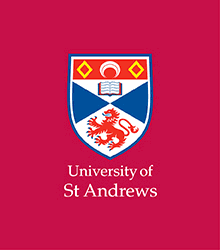O ! the praiseworthy and glorious merits of Saint Benedict, who, since he spurned his fatherland, and the pomp of the world for Christ’s sake, obtained the fellowship of all the blessed, * and came to share in the eternal rewards. V. Among the choirs of Confessors, he holds a glorious place, and beholds the very font of all good things. And came... (The 5th Responsory of Matins of St Benedict in the Benedictine Office.)
 |
The Triumphal Way of St Benedict, by Johann Michael Rottmayr, 1722; fresco on the ceiling of Melk Abbey in Austria. (Image from Wikimedia Commons by Uoaei1; click to enlarge.) - The pomp of the world is represented on the left side by a book full of alchemical symbols, two demons, one of which holds a censer, and a figure with a theatrical mask, being speared in the throat by an angel. (The censer refers to the pagan sacrifices which St Benedict found still happening on Monte Cassino when he moved there, and to which he put an end.) On the right, a figure with a Cross and a whip drives away two other female figures, one bare-chested, the other holding rich clothing and a crown; below them, a figure with thorny branches drives away another demon, a reference to St Benedict’s conquest of the vice of lust by rolling around in a bramble. Underneath St Benedict are angels holding a miter and crook, used by the abbot of Melk, a book with the opening words of the Rule, and a glass with serpent emerging from it; the last refers to an attempt by some very bad monks to poison St Benedict, who made the sign of the Cross over the glass, “which broke as if he had thrown a stone.”
|
R. O laudanda sancti Benedicti merita gloriosa, qui dum pro Christo patriam mundique sprevit pompam adeptus est omnium contubernium beatorum, * et particeps factus praemiorum aeternorum. V. Inter choros Confessorum splendidum possidet locum, et ipsum fontem omnium intuetur bonorum. Et particeps...
St Benedict died on March 21 in the year 543 or 547, and this was the date on which his principal feast was traditionally kept, and is still kept by Benedictines; it is sometimes referred to on the calendars of Benedictine liturgical books as the “Transitus - Passing.” There was also a second feast to honor the translation of his relics, which was kept on July 11. The location to which the relics were translated is still a matter of dispute, with the Abbey of Monte Cassino in Italy, founded by the Saint himself, and the French Abbey of Fleury, also known as Saint-Benoît-sur-Loire, both claiming to possess them. This second feast is found in many medieval missals and breviaries, even in places not served by monastic communities. (It was not, however, observed by either the Cistercians or Carthusians.). The second feast was in a certain sense the more solemn in the traditional use of the Benedictines; March 21 always falls in Lent, and the celebration of octaves in Lent was prohibited, but most monastic missals have the July 11 feast with an octave. In the post-Conciliar reform of the Calendar, many Saints, including St Benedict, were moved out of Lent; in his case, to the day of this second feast in the Benedictine Calendar.
St Benedict died on March 21 in the year 543 or 547, and this was the date on which his principal feast was traditionally kept, and is still kept by Benedictines; it is sometimes referred to on the calendars of Benedictine liturgical books as the “Transitus - Passing.” There was also a second feast to honor the translation of his relics, which was kept on July 11. The location to which the relics were translated is still a matter of dispute, with the Abbey of Monte Cassino in Italy, founded by the Saint himself, and the French Abbey of Fleury, also known as Saint-Benoît-sur-Loire, both claiming to possess them. This second feast is found in many medieval missals and breviaries, even in places not served by monastic communities. (It was not, however, observed by either the Cistercians or Carthusians.). The second feast was in a certain sense the more solemn in the traditional use of the Benedictines; March 21 always falls in Lent, and the celebration of octaves in Lent was prohibited, but most monastic missals have the July 11 feast with an octave. In the post-Conciliar reform of the Calendar, many Saints, including St Benedict, were moved out of Lent; in his case, to the day of this second feast in the Benedictine Calendar.




















